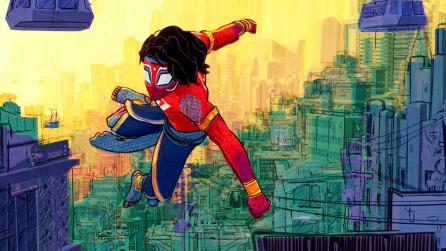Texturing the Choctaw creation story for Marvel TV’s Echo
Bringing the story’s strong cultural and mythological roots to life.
One thing’s for sure: Digital Domain is no stranger to the Marvel Cinematic Universe. Digital Domain’s artists worked on the climactic Statue of Liberty finale in X-Men, recreated parts of New York for Spider-Man: No Way Home, brought the supervillain Thanos to the screen for Avengers: Infinity War and much more.
But even with that resumé, texturing the CG elements of Marvel Television’s series, Echo, was a unique challenge because of the story’s strong cultural and mythological roots. “The show revolves around Maya Lopez — the first deaf, indigenous superhero to be portrayed in the Marvel Cinematic Universe,” begins Digital Domain Texture Show Supervisor, Nick Cosmi. “At Digital Domain, we knew we had to get the visuals right to properly portray a community that’s rarely seen on screen.”
To learn more, we caught up with Cosmi on how Digital Domain used Mari to texture episode one’s opening sequence, which brought an iconic story from Choctaw lore to life.
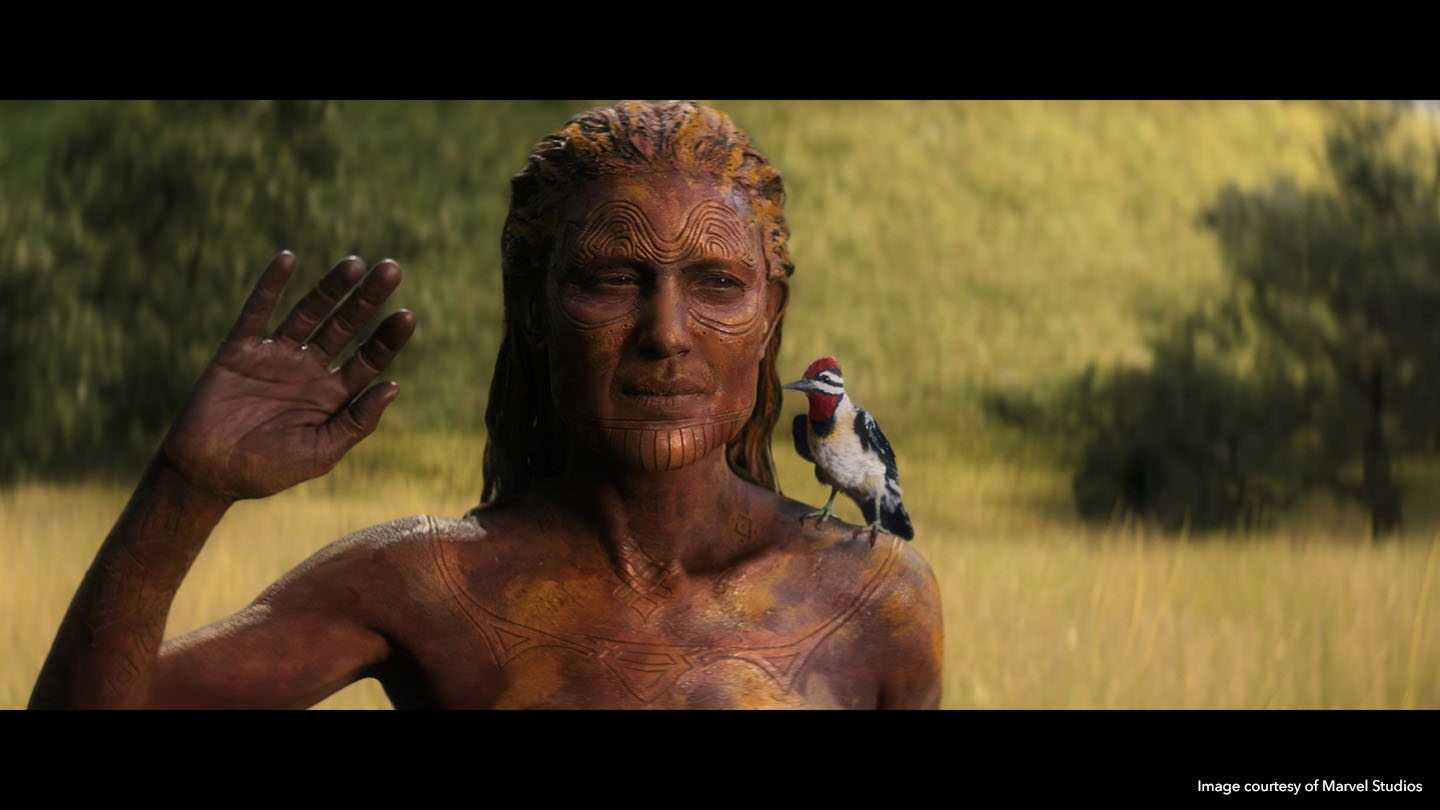
The birth of Chafa
Developed in close collaboration with Choctaw representatives, Echo’s opening sequence depicts the story of the first Choctaw ancestor, Chafa. The sequence sees Chafa and other Choctaw ancestors emerge from a pool of water in an underground cave. She then helps the ancestors escape from an earthquake that destroys the cave, before they all arrive in America and shed their clay skin to reveal human forms.
Digital Domain’s involvement began very early in the process, helping with pre-production to define the look for the sequence, which was shot practically on a set built around a pool using actors with practical makeup. In order to visualize the full scale of the destruction and character effects involved, however, the team needed to replace the practical set and actors with a 3D environment and digital doubles.
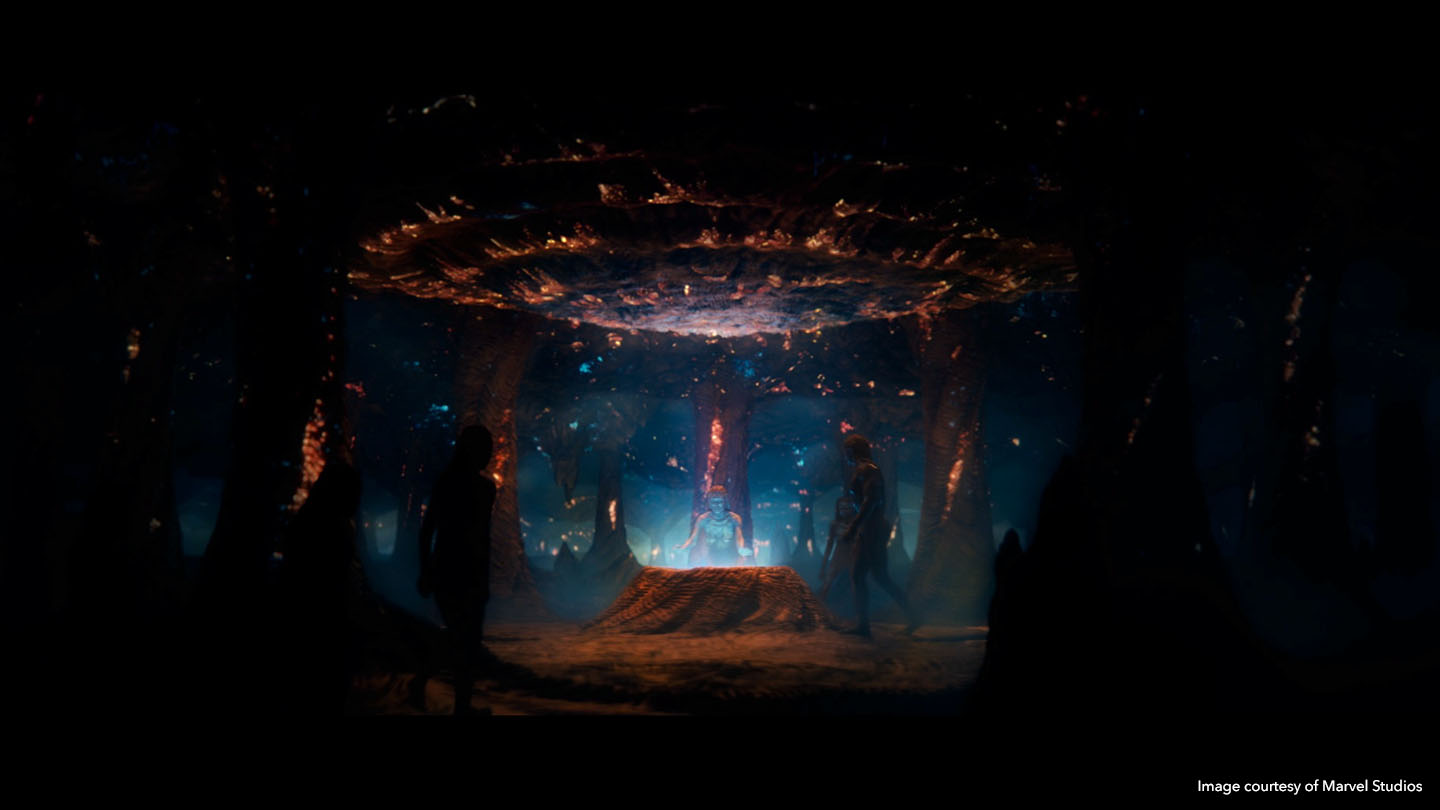
The first step towards doing this was working with Clear Angle Studios to create lidar scans, which were used as base references for rebuilding in 3D. Mari was then selected to match the texture reference from the lidar-scanned actors to the 3D digital doubles. “Our studio has trusted Mari for years with our digital humans. It’s our primary texture painting software,” said Cosmi. “Character work requires precision to match textures to real-life subjects. Mari provides us with tools that make this process easy.”
Creating textures with photo projection
To create the textures, Digital Domain’s team used photo projection to ensure that the images from the scan were matched perfectly. This was crucial for shots like Chafa emerging from the pool, where both the plate and CG character needed to blend together seamlessly.
The team began by wrapping their generic human mesh to Clear Angle’s scan geometry. They then made use of other assets provided by Clear Angle — including camera layouts and accompanying high-res photos of the actors. “In the modeling process, we checked key landmarks on the face and body, to ensure that the image plane in the cameras aligned with not only the scanned mesh but our wrapped mesh,” explains Cosmi. “We also used Nuke to collect all usable high-resolution photos, applied an STmap to undistort them, then did any further color correction needed.”
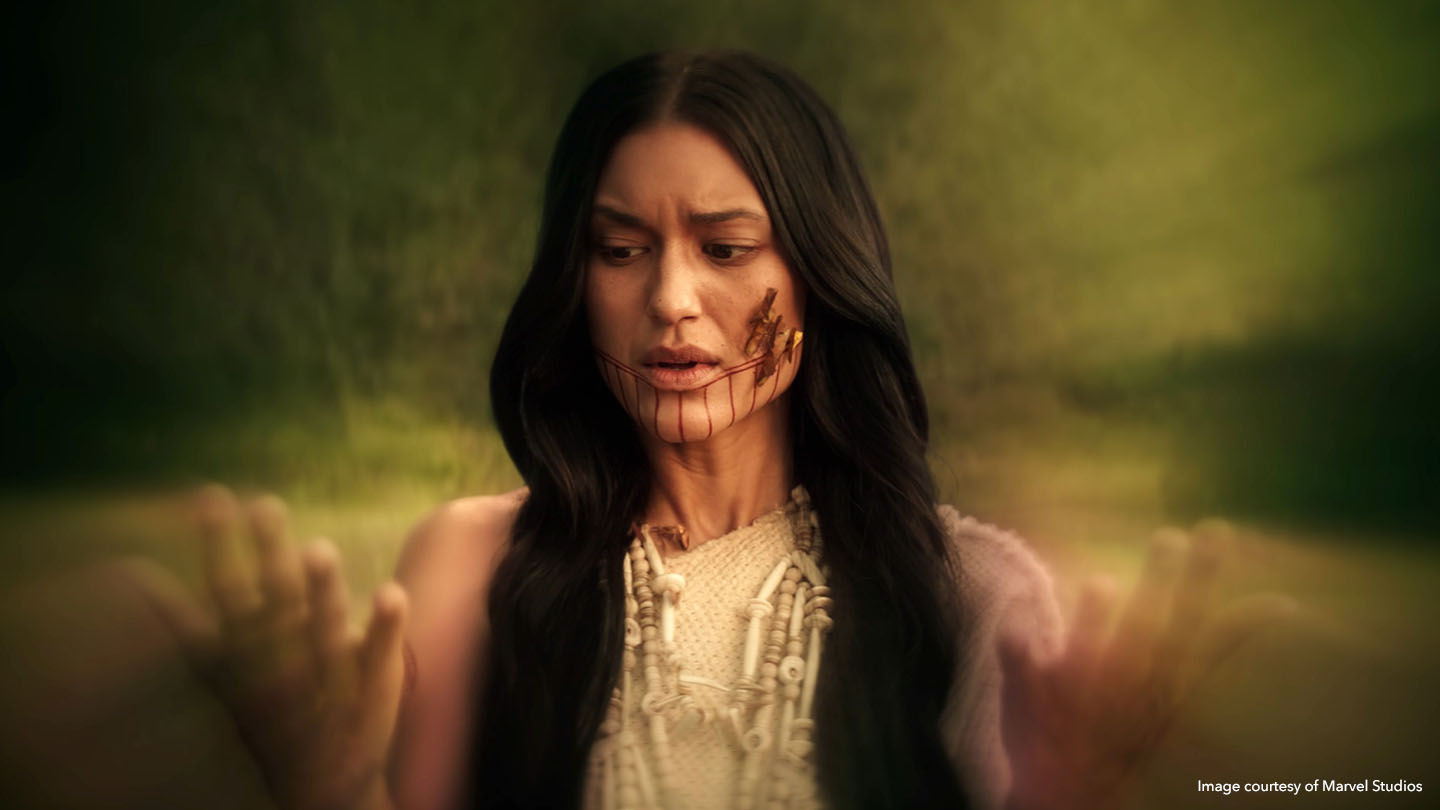
Once the undistorted and color-corrected images were ready, they were then imported into Mari, together with the camera layouts. Using Mari, artists could lock image ratios, then re-project high-quality textures onto the character models. For Echo, this high quality was important: Mari could transfer maps from the scanned geometry directly to the studio mesh, but Digital Domain’s artists found that the provided albedo map from the scans wasn’t the ideal resolution for production. Using photo projection provided an easy resolution to this problem.
“Most of the industry tries to move toward procedural textures and materials, but photo projection is still the most essential workflow for us at Digital Domain when re-creating 1:1 textured assets, especially for characters,” explains Cosmi. “I jump back and forth between Nuke and Mari, identifying which images are absolutely necessary to cover the whole asset. And, as long as I check my colors and values along the way, and stay organized by keeping the naming of the photos and cameras similar, it’s possible to create a diffuse pass covering the whole body within a day.”
The benefits of using Mari
As well as enabling artists to create 1:1 textures quickly, Mari also provided several other benefits to the Digital Domain team, like making it easier to fix problem areas when cleaning up scans. “Character scans always have flaws in the nooks and crannies of a human body in areas such as the eyelids, nostrils, and under the chin,” says Cosmi. “We spend more time fixing the inside of a human's lips than we do on most other parts of the body!”
Mari’s Paint Through tool helped to correct these problem areas. For Echo, the team used it to fill voids on the digital double with similar-looking details from the photos. They also used the Towbrush to further blend work to create a flawless texture, helping to refine the transitions from prosthetic to actor skin.
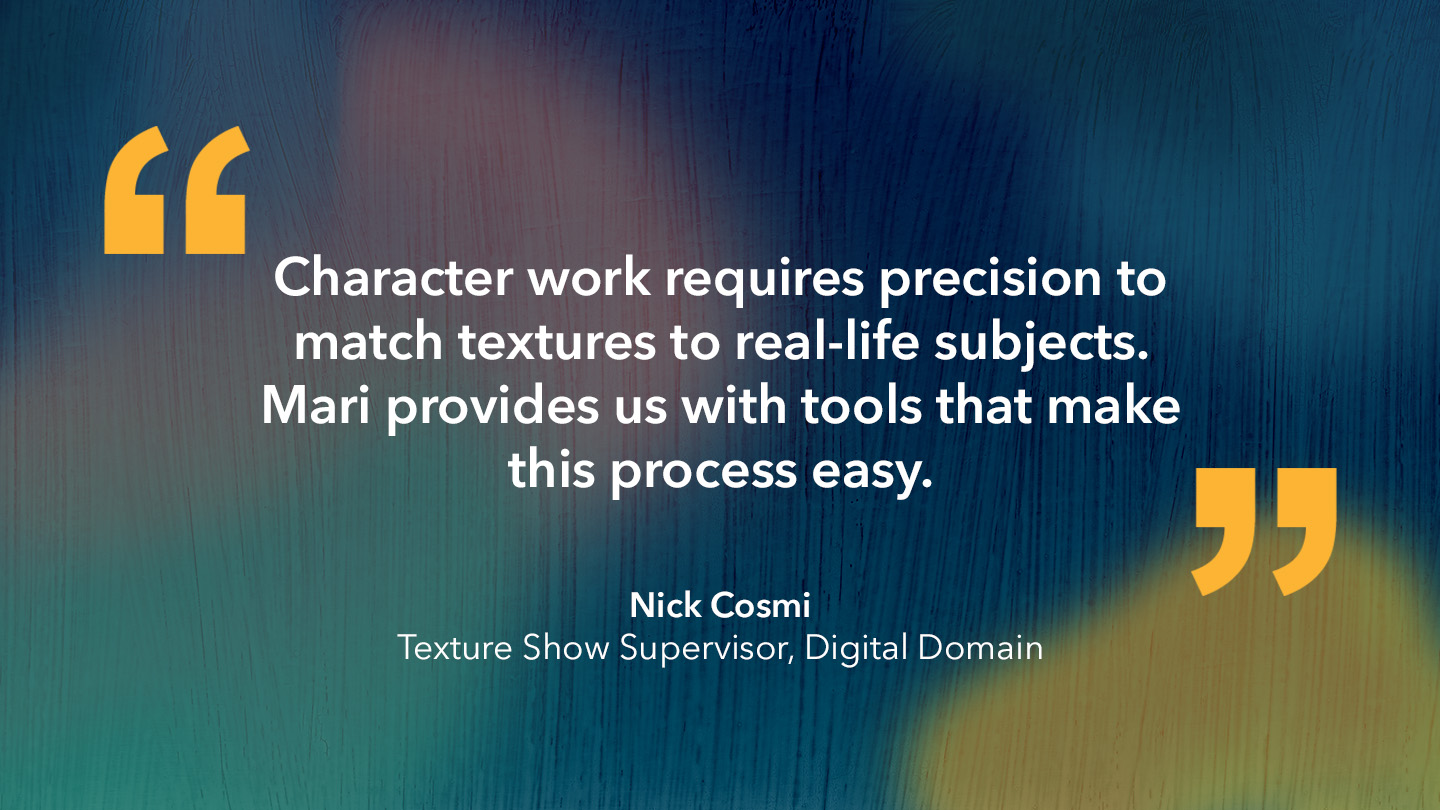
Another Mari feature that was essential to Cosmi’s work was Source Grade. This helped the artists to texture characters in situations where photos didn't always provide the exact color needed from top to bottom, and in different lighting scenarios. “With Source Grade, I'm able to slightly dial, color nudge and grade images to what I need right in the paint buffer while I'm projecting,” Cosmi explains. “I’ve saved countless work hours by not having to color correct images to perfection in an external software, just by having this on-the-fly option to make those subtle adjustments while I paint. It even allows me to take any image and instantly turn it into a black and white version for Luminance painting into Masks.”
Mari’s Node Graph, which the Digital Domain team has now completely transitioned to, also helped artists by unlocking painting options that weren’t possible with a layer stack, like sharing a common setup or template across all assets. “It’s like creating a perfect recipe, you can keep using it over and over again,” Cosmi adds. “We’ve also built a number of materials that rely on photographic elements and are more in line with physically based rendering values. This has helped us as a department paint with expected results that we know we can turn over to lookdev with more confidence than ever before.”
Giving power to the artists
By the time Echo’s opening sequence was complete, Digital Domain’s texture artists had created four character assets: a male and a female digital double, each with a super-accurate human and clay version of its mesh. While plenty of Mari tools helped, Cosmi says the success of the project wasn’t due to any specific one. Instead, it was about Mari’s overall ability to provide artists with a user-friendly way to apply traditional art techniques to their work.
This was especially useful when the team faced one of their biggest challenges on Echo’s opening sequence, which involved creating custom versions of a tattoo around Chafa’s wrist and hand. There were several shots where Chafa had her wrist in a rotated pose with her palms facing the ceiling. Because of this, the texture the team originally created became quite distorted. Thanks to Mari, the team was able to recreate the tattoo in a cleaner texture to ensure the details were preserved during matchmoved shots.
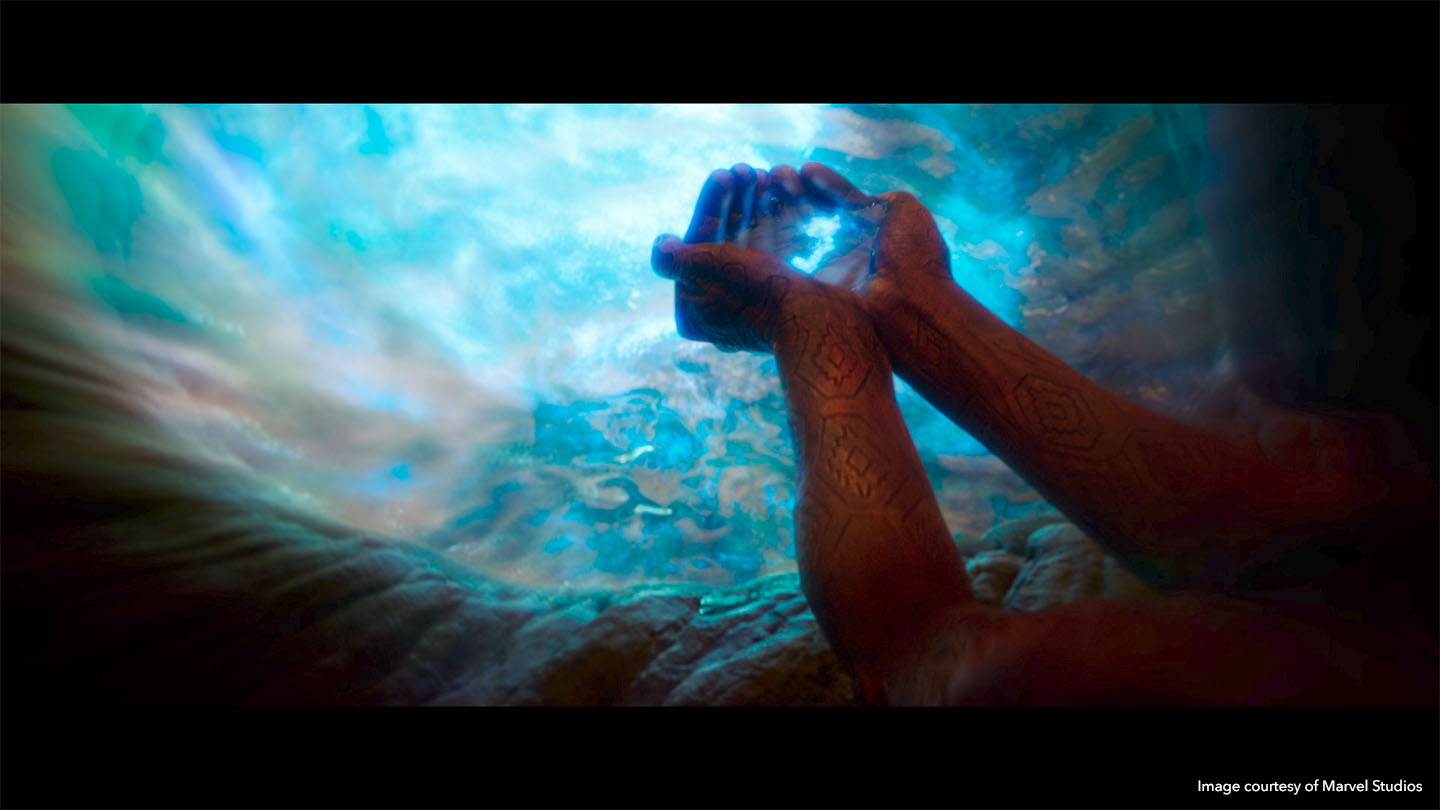
“Our first pass of textures matched to the original actor’s makeup as closely as possible,” says Cosmi. “In later versions, we then added several Isolation Masks to match the layout of the concept art. This was a very artistic process rather than a technical process. It came down to hand painting and accuracy, and there’s a number of ways to approach this from simple paint brushes, to using alphas and Paint Through, to dialing in the placement of masks with the Slerp tool and Grid Warp.”
“Whatever approach you choose,” he concludes, “the important thing is that creativity isn’t hampered. Our artists are encouraged to observe photos, match details, and include the uniqueness and composition that life provides us. And as a traditional painter and illustrator, I love to hand paint as much as possible when working on assets. Procedural approaches often seem too random and reliant on luck. Thankfully, Mari still offers the tried and true painting approach and toolset that allows artists like myself to bring textures to life, while keeping the workflow efficient.”
This article was originally published by befores & afters.
Want to know more about the latest updates and features? Find out what’s new in Mari.
